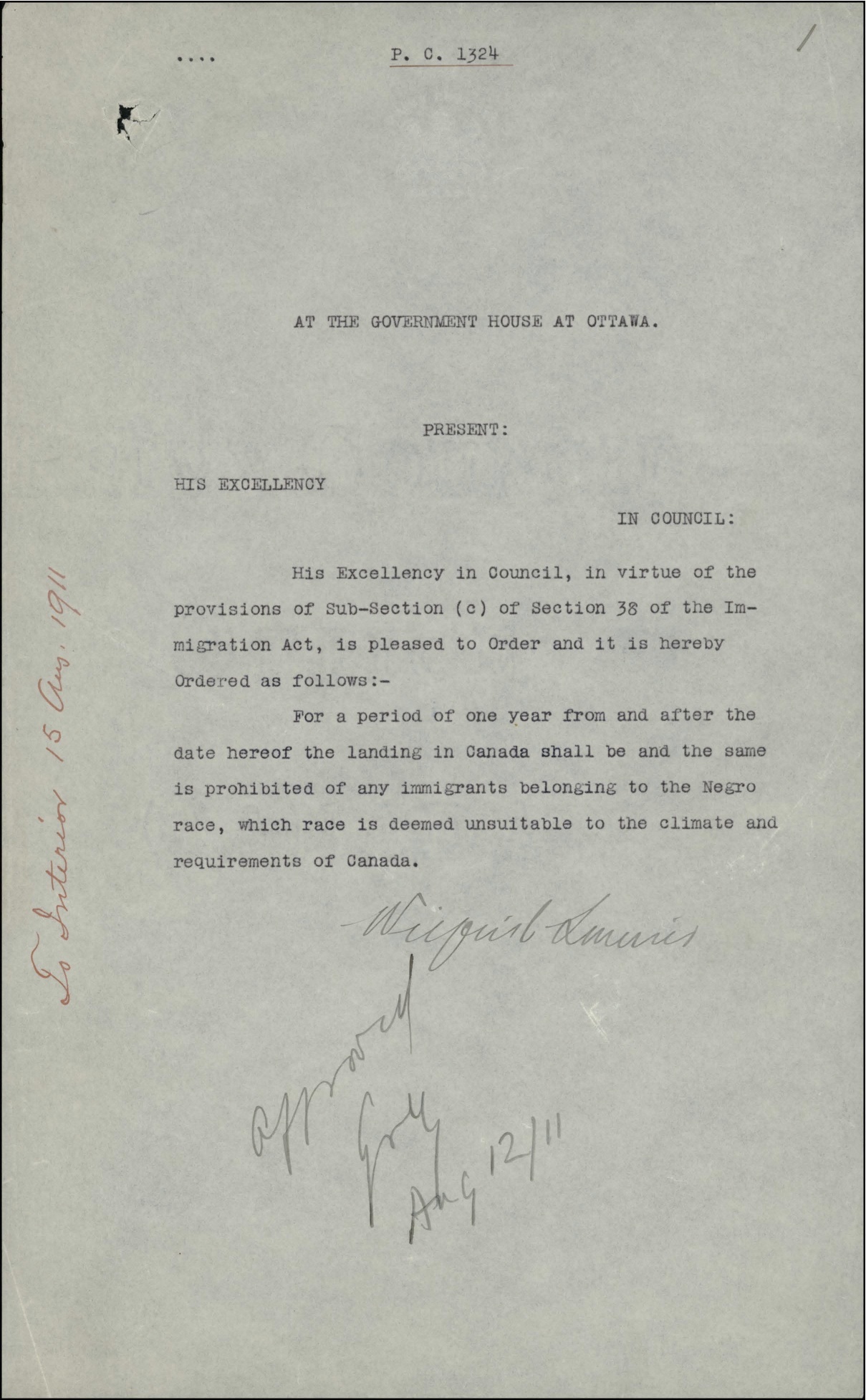Aside from Indigenous peoples, everyone living in Canada has ancestors who arrived in Canada during the past 400 years. The first Europeans to permanently settle in Canada were from France. Then, people from the United States, Britain and Ireland came to Canada. Black people also came from the United States to escape enslavement. After this, people from Continental Europe and China arrived. Now, people from all over the world come to Canada. (See Multiculturalism.) A large percentage of Canadians alive today are first-generation Canadians who immigrated. Many are second-generation Canadians — children of immigrants. Without immigration, Canada would not be what it is today.
This article is a plain-language summary of immigration to Canada. If you are interested in reading about this topic more in depth, please see our full-length entry, Immigration to Canada.

Immigration from France
When Britain took control of New France in 1763, there were approximately 70,000 French colonists. Most of them were born in New France. New France never attracted much immigration. Most people in France never thought of moving to New France. The French thought it was too cold and too dangerous. French kings and the government in New France tried to attract immigrants, but they failed. (See Population Settlement of New France.)
Immigration to British North America
The first non-French European settlers came from the 13 Colonies. During the 1780s, tens of thousands of Loyalists fled to British North America. (See Loyalists (Plain-Language Summary).) Most of them had British ancestry. However, many were from other parts of Europe. Over 3,500 were of African descent. (See Black Loyalists.) Some were enslaved by Loyalists and some were free. The Loyalists were the first large influx of English-speaking people in Canada. Many more English speakers arrived during the early 19th century. Tens of thousands arrived from the United States. Most of them settled in what is now Ontario. They came in search of cheap farmland. Starting in the 1840s tens of thousands of Irish arrived in Canada. Many of them were escaping from the famine. The Irish continued to come. Since many were Catholic they helped to change the religious landscape of Canada. Before them, most English speakers were Protestant. Many Black Americans migrated to Canada after escaping from enslavement. (See The Underground Railroad (Plain-Language Summary).)
Immigration to the West Coast and the Prairies
The West Coast attracted thousands of British immigrants. The Prairies, on the other hand, attracted few immigrants. The Prairie was seen as a cold and dangerous place. Also, it was difficult to get there. The Canadian government did its best to attract immigrants to the West. For example, it gave settlers cheap land. As a result, tens of thousands came. By the late 19th century, immigrants from all over Europe had moved to Canada. The Canadian economy was getting bigger. So, Canada needed workers. Therefore, the federal government under Prime Minister Wilfrid Laurier had a more open immigration policy. Immigration to the Prairies and elsewhere in Canada forced many Indigenous peoples off their lands. (See Immigration to Canada.)
Immigration and Discrimination
Many groups of people were not welcome to Canada. African Americans were discouraged from moving to the Prairies. (See Order-in-Council P.C. 1911-1324.) Starting in the 1880s, Chinese immigrants had to pay a “head tax” to come to Canada. Then, after 1923, they were not allowed to come to Canada. (See Chinese Immigration Act.) At the same time only a few hundred Japanese people per year could come to Canada. South Asian immigrants like Sikh immigrants faced restrictions — even though, like Canadians, many were subjects of the British Empire. (See Komagata Maru.)
Changes to Immigration Policies
In 1967, Canada adopted something called the “points system.” People who wanted to come to Canada had to have a certain number of points to be considered. The number of points was determined by the skills and abilities of the applicant. Race and country of origin were no longer considered by Canadian immigration. Canada was the first country in the world to have a points system. (See Immigration Policy in Canada.)

 Share on Facebook
Share on Facebook Share on X
Share on X Share by Email
Share by Email Share on Google Classroom
Share on Google Classroom






